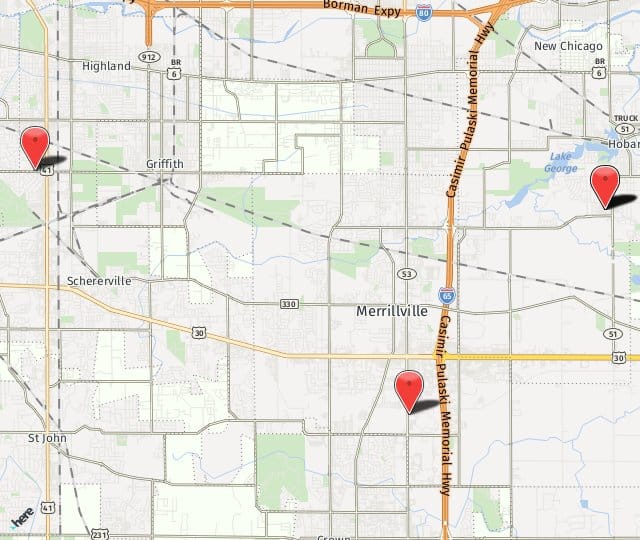Persistent neck pain, numbness, or weakness from nerve compression caused by foraminal stenosis can disrupt your daily life. When nonsurgical treatments aren’t enough, a cervical posterior foraminotomy may give you some relief.
At Bone & Joint Specialists, Dr. Mohammad Said Shukairy provides advanced care for spinal conditions. With over 12 years of experience in Northwest Indiana, he specializes in minimally invasive spinal surgery, combining expertise from both neurosurgery and orthopedics. We’re located in Merrillville, Highland, and Hobart, Indiana.
What Is Cervical Posterior Foraminotomy?
Cervical posterior foraminotomy is a surgical procedure that treats foraminal stenosis, a condition in which the openings for nerve roots to exit the spinal canal have become too small. This usually causes painful nerve compression.
These openings, called foramen, may have gradually become clogged by herniated discs, calcified ligaments or joints, or bone spurs. Whatever the cause, once the foramen are narrowed, the pressure of the bone against the cervical nerves may cause pain, numbness, weakness, or tingling sensations. If non-surgical treatments do not work to treat this condition, cervical posterior foraminotomy could be necessary.

The cervical posterior foraminotomy will eliminate the compression on the affected spinal nerve to relieve painful symptoms. As its name suggests, a cervical posterior foraminotomy is performed on the spine in the neck area, with the surgeon making an approach through the upper back.
Symptoms of Cervical Nerve Compression From Foraminal Stenosis
Common symptoms of cervical foraminal stenosis include:
- Neck Pain: Persistent or sharp pain in the neck, often aggravated by movement or certain positions.
- Shoulder Discomfort: Pain or tension that radiates from the neck to one or both shoulders.
- Arm Weakness: Difficulty lifting or holding objects due to weakened arm muscles.
- Numbness and Tingling: A "pins and needles" sensation in the arms, hands, or fingers.
- Reduced Grip Strength: Difficulty gripping objects or performing fine motor tasks with your hands.
The Cervical Foraminotomy Procedure
- Anesthesia and Positioning: You’ll be under general anesthesia for the procedure. Once you’re comfortably sedated, your surgeon will position you face down on the operating table to access your cervical spine.
- Incision and Exposure: A small incision is made in the back of your neck. Your surgeon will carefully move aside the surrounding muscles and tissues to get a clear view of the affected area.
- Widening the Foramen: The narrowed area causing pressure on your nerves will be addressed by trimming or removing a small portion of bone to create more space.
- Relieving Additional Pressure: If bone spurs, thickened tissue, or disc fragments are contributing to your nerve compression, your surgeon will remove them to fully alleviate the issue.
- Stabilization (If Needed): In some cases, your spine may need added support and a spinal fusion might be performed to keep the area stable.
- Closing the Incision: Once the procedure is complete, your surgeon will reposition your tissues and muscles with care before closing the incision. Every step is taken for you to have a smooth recovery process.
Recovery from Cervical Foraminotomy
You can expect this procedure to be done on an outpatient basis, allowing you to go home the same day. You’ll need to wear a soft neck collar temporarily to limit head and neck movement while you heal.
Your provider will likely recommend physical therapy to help you regain strength and flexibility in your cervical spine. While certain physical activities will be off-limits until you’ve fully healed, most people can return to work within about four weeks.
Benefits of Cervical Posterior Foraminotomy
Cervical posterior foraminotomy is a good option to help with nerve compression caused by foraminal stenosis. If you've been experiencing debilitating symptoms, you could experience these benefits from surgery:
- Pain Relief: The procedure relieves pressure on compressed nerves, reducing or eliminating neck, shoulder, or arm pain.
- Improved Mobility: You may experience greater flexibility and ease of movement in your neck and upper body.
- Reduced Numbness and Weakness: Nerve decompression can restore sensation and strength in areas affected by foraminal stenosis.
- Minimally Invasive Access: The surgical approach through the upper back minimizes disruption to surrounding tissues, promoting faster recovery.
How Do I Prepare for Cervical Posterior Foraminotomy?
Your provider will guide you through specific steps to prepare for surgery, which may include:
- Preoperative Testing: Complete any imaging tests or lab work your surgeon requires to confirm surgical plans.
- Medication Adjustments: Discuss your current medications with your provider to determine if any should be paused or modified before surgery.
- Fasting Instructions: Follow guidelines about when to stop eating or drinking before the procedure.
- Arranging Support: Have someone to drive you home and assist you after surgery.
- Comfortable Recovery Space: Set up a space at home with items like pillows, medications, and essentials for easy access during recovery.
We may provide additional instructions to help you prepare for a successful surgery and recovery.
Risks of Cervical Foraminotomy
Complications are rare during a cervical posterior foraminotomy, but there are risks inherent to any type of surgical procedure.
The risks associated with a cervical posterior foraminotomy include blood loss, infection, nerve damage, blood clots, and an adverse reaction to anesthesia or medication. There is also a small risk that the pain from the stenosis will persist after surgery.
Why Choose Bone & Joint Specialists?
Dr. Mohammad Said Shukairy is an experienced neuro and spine surgeon who specializes in minimally invasive spinal surgery, including procedures like cervical posterior foraminotomy. With over 12 years of experience serving patients in Northwest Indiana, Dr. Shukairy brings a unique perspective to spinal care, with expertise in both neurosurgery and orthopedic surgery.
Dr. Shukairy completed his medical degree at the University of Toledo, neurosurgery residency at Henry Ford Hospital, and fellowship training in complex and minimally invasive spinal surgery at Rush University. He is passionate about spinal health, helping patients recover from acute injuries, and promoting long-term wellness. Dr. Shukairy and the rest of the team at Bone & Joint Specialists want to help you get back to the activities you enjoy.
Frequently Asked Questions
Are There Non-Surgical Treatment Options for Foraminal Stenosis
Some patients with foraminal stenosis can be treated with anti-inflammatory medications, corticosteroid shots, physical therapy exercises, or a neck brace to immobilize the spine. When the condition does not respond to these conservative treatments, however, surgery may be required.
How Do I Know if I’m a Good Candidate for Cervical Posterior Foraminotomy?
You might be a good candidate if you have persistent symptoms like neck pain, numbness, or weakness caused by nerve compression from foraminal stenosis and nonsurgical treatments haven't worked. Your surgeon will evaluate your condition using imaging studies, medical history, and physical exams to determine if this procedure is right for you.
How Soon Can I Drive After Surgery?
You should not drive immediately after surgery, especially while wearing a neck collar or taking pain medications. Most people can resume driving within a few weeks, depending on how quickly they regain neck mobility. Your surgeon will provide specific guidance based on your recovery progress.
How Do I Manage Pain During the Recovery Process?
Pain management after cervical posterior foraminotomy may include prescription pain medications, over-the-counter anti-inflammatory drugs, and ice packs to reduce swelling. Physical therapy can also help with discomfort and mobility. Your surgeon will create a pain management plan that's specific to you.
Comprehensive Relief from Nerve Compression Symptoms
Cervical posterior foraminotomy can provide lasting relief from neck pain, nerve compression, and related symptoms.
At Bone & Joint Specialists, Dr. Mohammad Said Shukairy offers expert treatment at our locations in Merrillville, Highland, and Hobart, IN. If you’re ready to explore your options, call us at 219-795-3360 to schedule your consultation today.

